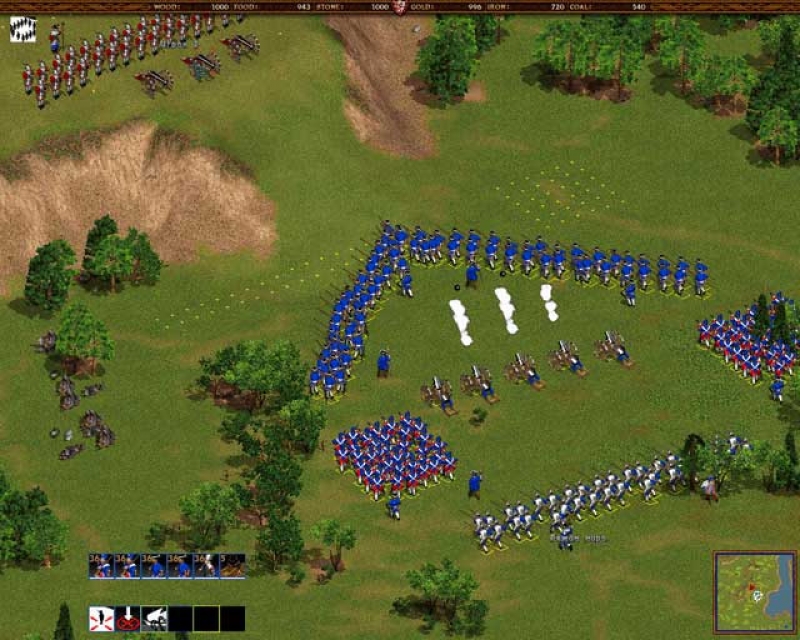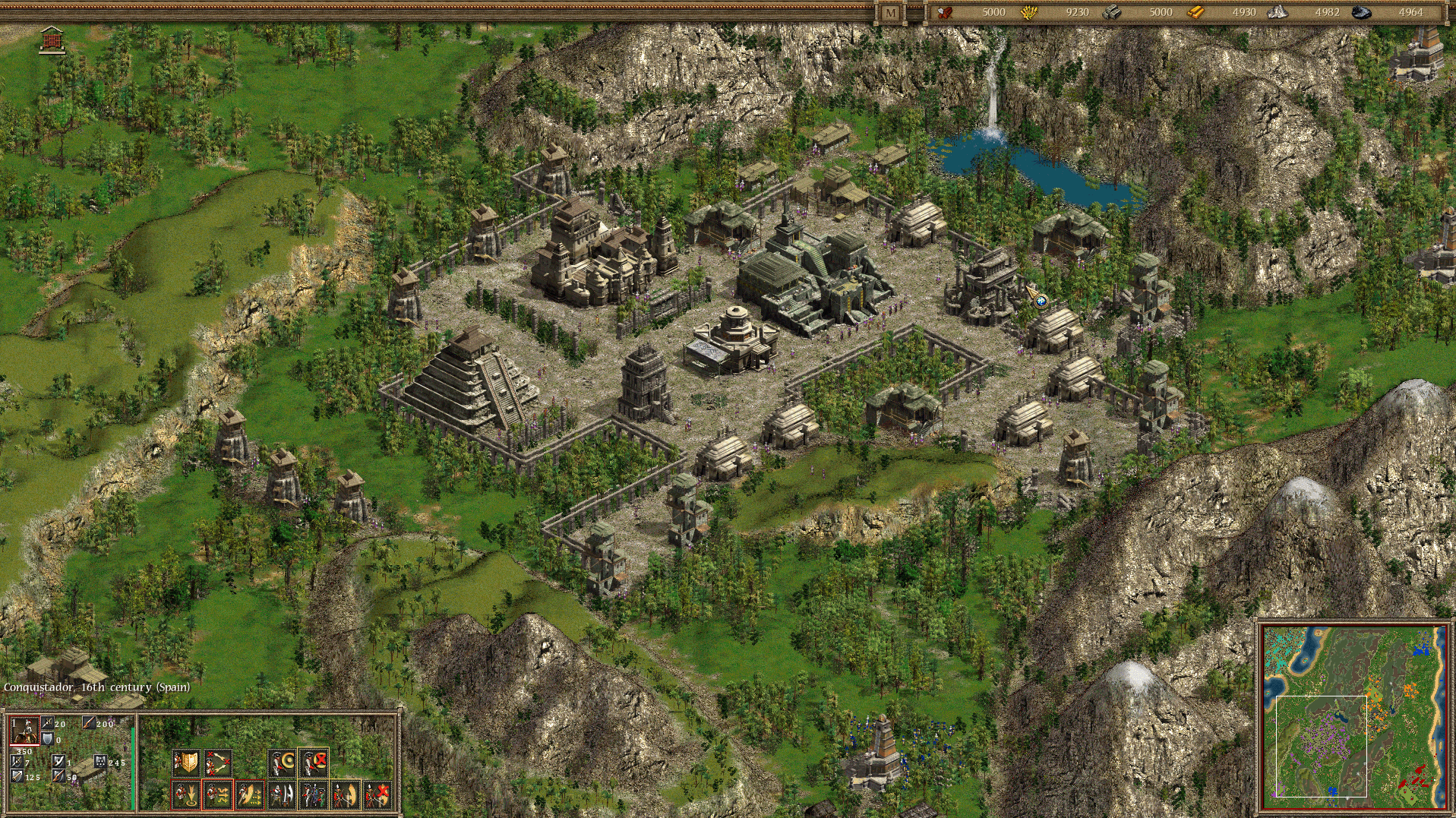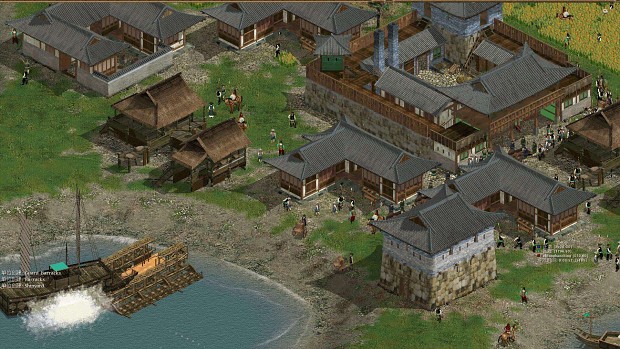American Conquest: Cossacks forgotten brother.
Introduction
23 years ago, Cossacks: European Wars was launched in North America and Europe, becoming a best seller in the United Kingdom and Russia. Over 100,000 copies were sold in the UK alone. Critics were in awe at the games now trademark gigantic battles, beautiful but simple graphics, and it's then cutting-edge special effects. The game is fondly remembered by many to this day, and still has an active community. America however, was largely unreceptive to Cossacks, most likely because of the games subject matter and it's unorthodox gameplay. With this in mind, the idea for American Conquest was born.

What's American Conquest all about?
American Conquest is about the conquest of America from the 15th century all the way up to the 19th century. Players can choose to play as natives, colonists or one of the European powers; each nation has their own campaign. The core gameplay is quite similar to Cossacks, you build up your settlement, upgrade and research tech and fight large battles. Except this time, battles are fought with sticks and stones...and pikes. Unlike Cossacks, each nation actually plays differently and all have their own unique units. The Sioux for example, have some of the best cavalry in the game and can easily decimate a line of European musketeers. Some European countries have trappers, which are extremely fast moving units with muskets. These are weak against other European powers but can be good in a pinch when used against weaker natives. The Europeans are naturally alot more stronger than the natives, but they are not invincible and can easily be overrun and destroyed with human-wave attacks and flame archers.
The campaigns are all unique and take place in vastly different time periods, and each mission has a fully voiced briefing, detailing a tonne of historical context. It makes for a genuinely interesting gaming experience, though if you're not a history nerd these are skippable. AC covers some rather niche areas, like the Russian's colonial activities in Alaska, and of course some of the more famous events like Cortez's expedition.
How does it play?
The game starts like any other RTS. You have to gather food and resources, build up your settlement and conquer the map. Not long after playing, you will realise its quite different from most other RTS games. In order to create military units, you must create Peasants beforehand, and then send them into your fort where they are then converted to soldiers. Peasants are created at 'Dwellings', and if all dwellings are destroyed, production of soldiers will stop, making peasants arguably the most important units in the game. The most important resource you need is food because without it, not only can you not create units, you cannot feed them either and they will starve to death on the battlefield.
Units can also run out of ammo if you have no coal mines operating, and this will cripple any European nation if not properly prepared. This game also has a morale system, which gives flanking maneuvers and encirclements a real edge to them because if a lot of units are killed quickly, the rest of the units morale shatters and they retreat. This somewhat prevents swarms of cheap units from overrunning every defence. Morale can be increased by inserting flag bearers or shamans within your ranks. The games best feature is the zoomout function; Cossacks lacked this and it made managing gigantic armies a pain. It also allows you to get a good view of the beautiful map design. The game's graphics hold up amazingly and the maps are the most gorgeous I've seen in an RTS.

Like Cossacks, the unit count in this game is 16,000, and battles can rage on for several minutes at a time. Structures are highly important in this game, and taking them over is how games are won. Units inside a building can wipe out entire armies if they have no way to destroy the building, which can get incredibly tedious if you're sending troops into a densely built up area. There have been some games where I have had cannons firing on the enemies town for 15 minutes before sending a single troop in due to how overpowered populated structures are. You can take over structures by sending troops into a building but this is incredibly wasteful and it takes too many troops to take over one building if the enemy is well equipped. The big structures like forts and fortresses require literally hundreds of units to be sent into them like lemmings to take them over.
Mission Variety
This is where this game truely shines. A far cry from the usual 'kill every unit on the map' mission formula, AC shakes things up a bit with some more peaceful missions. This can be a nice change of pace, or a complete snoozefest depending on your preferences. Some missions revolve around just building up a town and gathering a certain amount of resource. Others task you with roaming the wilderness with a small army capturing native peasants to sell on the slave market. Aside from the main campaigns, the game offers a skirmish mode and a variety of single missions; some are huge battles between native hordes and colonists, others are Napaleonic battles, and some are just hunting buffalo. There is also a very basic diplomacy system which basically consists of paying a neutral nation to attack your enemy, or paying a nation to leave you alone. Sometimes you can find merchants who will sell you upgrades and heal your army.
Immersion
Being an isometric RTS, you can't get immersed like you would in an FPS, but the game's attention to detail on the maps, combined with the mini history lesson before starting a mission. really sets the scene. Marching troops through densely wooded areas is actually dangerous too, as the game has lots of animals, most deadly, that pose as much as a threat as your enemy. In fact they are almost too strong, and I have had many cases of a crocodile surviving a volley of musket fire and killing a few soldiers afterwards. The sound and special effects in this game are amazing, paticularly the cannons, they have a great boom and pretty smoke effects. The music is nice, but very repetitive after a while.
Modding Scene
As the game was never that popular to begin with, the modding scene is practically non-existent, but not dead and buried. In fact, as recently as 2020, a huge overhaul mod was released titled "Rise of East Asia", which is essentially an Asian reskin. A Napaloeonic warfare mod exists too, European Warfare: Napoleonica, which has been abandoned since 2011. Don't expect to find many mods for this game, or many custom maps.

Flaws
Despite the games beautiful presentation, there are some glaring issues that seriously spoil this game. The worst issue by far being there is no hotkey for an attack move. There is a hotkey for everything else but not that; why they did that is beyond me. That is a bare minimum for an RTS and its absence is incredibly annoying and slows gameplay down alot. Another huge issue, you cannot rebind the keys...at all. In fact the whole options menu is pitiful. You can adjust the resolution, scrolling speed, game speed and the volume. Thats it. There isn't even any graphics settings, not that you'd need to adjust them anyways given how old this game is. For a PC game, that is laughable.
Difficulty settings on some missions doesn't seem to make any difference either. This goes both ways and I played one on the Impossible setting, and the enemy didn't attack me once, and on Easy difficulty on some missions, the enemies swarm you before you can even build a town. The difficulty settings seem pointless given how random the AI's behavior is. Pathfinding can be hit or miss too especially in built up areas and sometimes an army in formation will completely ignore move orders which has cost me a game or two. Formations give stat bonuses to troops in them, but the hassle of training officers, drummers and flagbearers only for them to ignore orders almost makes it not worth it, instead opting for swarming tactics.
The last serious issue isn't anything in the game, but launching the game. Personally, I've had no issues with resolution and launching, but a lot of people have and its only fair that it is included here. The Steam version of the game does not work at all and can only be played after applying community made patches. The GOG version launches and plays for me, but some reviewers on there have not had the same luck. Although it's cheap, no one likes wasting any amount of money and having nothing to show for it.
Conclusion
Although there are many flaws to this game, it is one of, if not the only RTS game that covers this period in history so faithfully. The game has no quams about telling you to plunder and massaccare your way through the plains, jungles and deserts of America. It's ginormous battles remain unmatched even to this day, even though there are some issues with the AI. But for me, the real fun I had with this game was using the cheat menu, and I think most other players would agree that the best part about the game is ignoring all logic and rules and just slamming armies against eachother with no consequences. You can use the cheat menu during missions, or you can use the scenario editor to create a custom battlefield and the results can be amazing if you care to sink enough time into it. With the amount of nations and unique units available, you can easily spend hours in the scenario editor creating entirely fictional conflicts for your own amusement. However, this game is let down by the bugs I mentioned before, and those are dealbreakers for some.
I can only recommend this game if you are buying it, being fully aware it is a 20 year old game, and that it will show. If you can tolerate it's many quirks, it is a great timesink with near endless replayability thanks to the skirmish mode and map editor. When playing this game, you can see for yourself why it never blew up like Cossacks, but that doesn't make it a bad game, and any classic RTS fan should give this a go.








